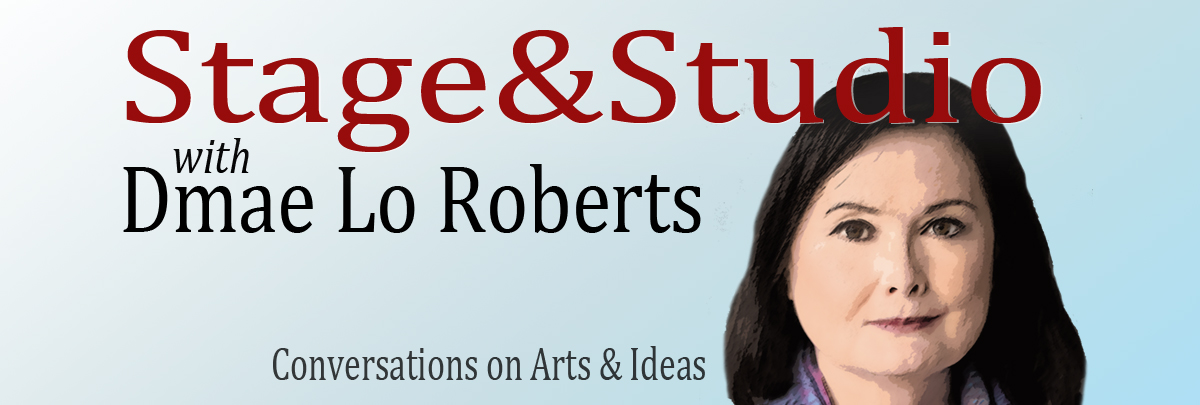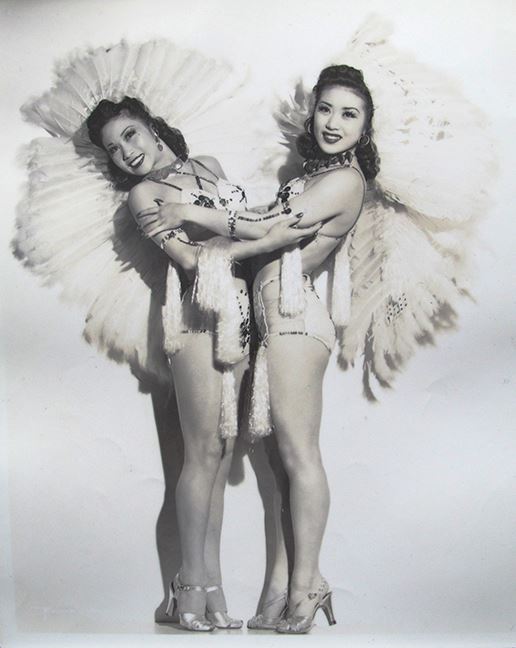Arthur Dong – Forbidden City, USA
Dmae talks with Arthur Dong, a Peabody-winning filmmaker who has written a book based on his research and  film: Forbidden City, USA. Dong’s 1989 film aired on PBS’ American Experience program.  Now 25 years later, he put together a comprehensive document of photos and stories from the original performers from 1936-1970.
Podcast: Play in new window | Download

I first heard about the golden era of the Chinese American nightclubs through Arthur Dong’s 1989 documentary Forbidden City, USA. In this hour-long documentary, Dong focused not only on the most famous of these nightclubs, the Forbidden City, which opened in San Francisco in the late 1930s, but the time period that gave gave rise to Asian American performers following their dreams. For more than five years, Dong intercut candid interviews with past performers and archival footage of their acts and created a celebratory film that aired around the country on PBS’ American Experience.
Nearly 30 years after he first began interviewing past nightclub performers, Dong has compiled a new book, Forbidden City, USA: Chinese American Nightclubs 1936-1970. The book contains startling photographic gems and inspiring interviews he couldn’t include in the film. Dong has become a scholar of this time period and has amassed the largest collection of photos and memorabilia from what might have been forgotten history if he hadn’t created his film and the book.
I can’t help being drawn to the celebratory aspect of the stories he gathered. When it comes to Asian American history, there isn’t a great deal of joy that comes readily. No mistake the people Dong interviewed had endured racism, estrangement from their families for pursuing their dreams and had been openly barred from Hollywood as anything but stereotypes. Yet you can’t help but feel delight when seeing photos and film footage of performers like Dorothy (Takahashi) Toy in a Ginger Rogers long gown and and Paul Wing in Fred Astaire top hat and tails dancing in harmony with each other.
The book also contains artistic and still risqué photos of the “Sally Randâ€-like bubble dancer Noel Toy. Dong said Toy “performed pretty much in the nude.†Because she was so daring during her time, he didn’t know what to expect from her but he found Toy “down-to-earth and pragmatic and very proud of her body.â€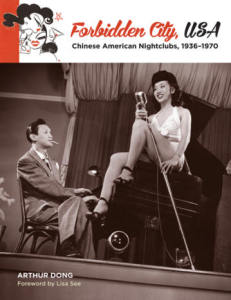
The Asian American nightclub performers broke new ground that defied stereotyping and were well attended by white audiences and celebrities like Ronald Reagan. Clubs like Forbidden City were a place where a mainstream audience could dispel myths that Asian girls were bow-legged or that Asians didn’t have talent like white performers
Arthur Dong says they didn’t set off to change history. He says they were living their lives and weren’t thinking about their historical background. They did what they could to survive and to follow their dreams.
“What they accomplished was so celebratory,†he says. “They didn’t think about fighting a barrier to advance equal rights. They fought because they wanted to sing and dance.â€
Dong interviewed more than 100 people and he estimates he has at least 100 hours of audio and film interviews. When he began in 1985, he had to meet people face to face. There was no Facebook or e-mail. He flew across the country to meet people because a good many of the performers had left San Francisco. That led to a close family feeling as he hung out with them and shared their stories. He said he’s still meeting people and hearing stories, though not many are around anymore. But because the clubs lasted through till 1970 he’s gotten to know people from the latter time period.
Through the years he stayed in touch with many of the performers, sometimes going to their dinners and reunion gatherings. Many of the performers went to his film premieres. He got a little teary eyed as he admitted that, since so many have passed on, he misses that social interaction.
When I asked Dong about his favorite interviews, he paused for a long time. How could he choose? Then he started talking about Tony Wing, the leading man dancer who didn’t care what people thought. Dong especially loved his humor. “He told the funniest dirty stories,†he said. “He made me turn off the tape recorder!â€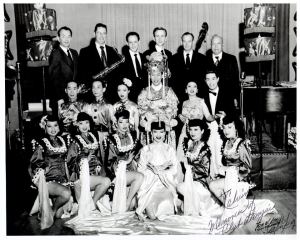
Dong debated about how much he wanted to reveal about Wing and several other performers regarding their sexual orientation. Because many of the interviewees are dead, Dong decided he didn’t want to fully disclose what he learned. But he said there are hints in the book of at least five profiles that are gay, lesbian or bisexual.
Another favorite interview was a beautiful dancer named Mary Mammon who talked about the racial stereotypes of Asians of the time such as how people thought all Asians were cooks or houseboy named “John.†Dong said she was the most aware of “what was going on†before her and during her lifetime in terms of racial equality.
“They’re all my favorites in different kinds of ways. Everybody had something about them that made them so unique and exciting to be with.â€
Though he got a distributor, Dong self-published this book just as he produces his films independently. The book has received a good amount of notice. Lisa See, who reached out to Dong when she was researching her novel China Dolls, set in the Chinese nightclub era, wrote the foreword for Forbidden City, USA.
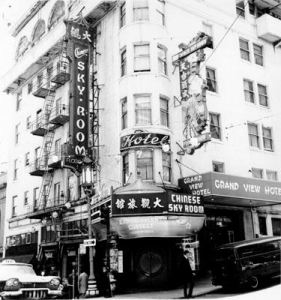 Dong is currently finishing up a film on Haing S. Ngor, the physician who won the Academy ward for supporting actor in The Killing Fields. Dong also archived all the raw film material when he found that termites had eaten through to his original film stock in his storeroom. Now all the voices and film of all of his old projects will be housed at the Arthur Dong archives at UCLA’s film and television archives. He’s still not sure where all the photos and memorabilia will be housed from the Forbidden City, USA book. He’s hoping for another museum exhibit like the one he had at the San Francisco public library. But he’s not sure what will happen to it after that. Dong is certain that young people, especially those who want to be artists, writers or performers, can learn from this time period of American history.
Dong is currently finishing up a film on Haing S. Ngor, the physician who won the Academy ward for supporting actor in The Killing Fields. Dong also archived all the raw film material when he found that termites had eaten through to his original film stock in his storeroom. Now all the voices and film of all of his old projects will be housed at the Arthur Dong archives at UCLA’s film and television archives. He’s still not sure where all the photos and memorabilia will be housed from the Forbidden City, USA book. He’s hoping for another museum exhibit like the one he had at the San Francisco public library. But he’s not sure what will happen to it after that. Dong is certain that young people, especially those who want to be artists, writers or performers, can learn from this time period of American history.
“If you got a dream. Don’t listen to your parent or what society says you can or can’t do. Don’t worry about the cultural or racial barriers. If it’s in you and you have talent, you have to know what you want and go after it. It’s nothing new. But to see that drive embodied in Chinese nightclubs during the 1940s, 50s and 60s, that was, and still is, new.â€
More on (www.ForbiddenCityBook.com) turns into:
http://deepfocusproductions.com/forbidden_city_book.php
Check out the Arthur Dong collection:
 https://www.cinema.ucla.edu/collections/arthur-dong-collection-ucla-film-television-archive
You can hear Stage & Studio on:
- the KBOO website and on 90.7FM liveÂ
- Â Subscribe to Stage & Studio On iTunes!
- And always on the official Stage & Studio website!
